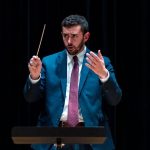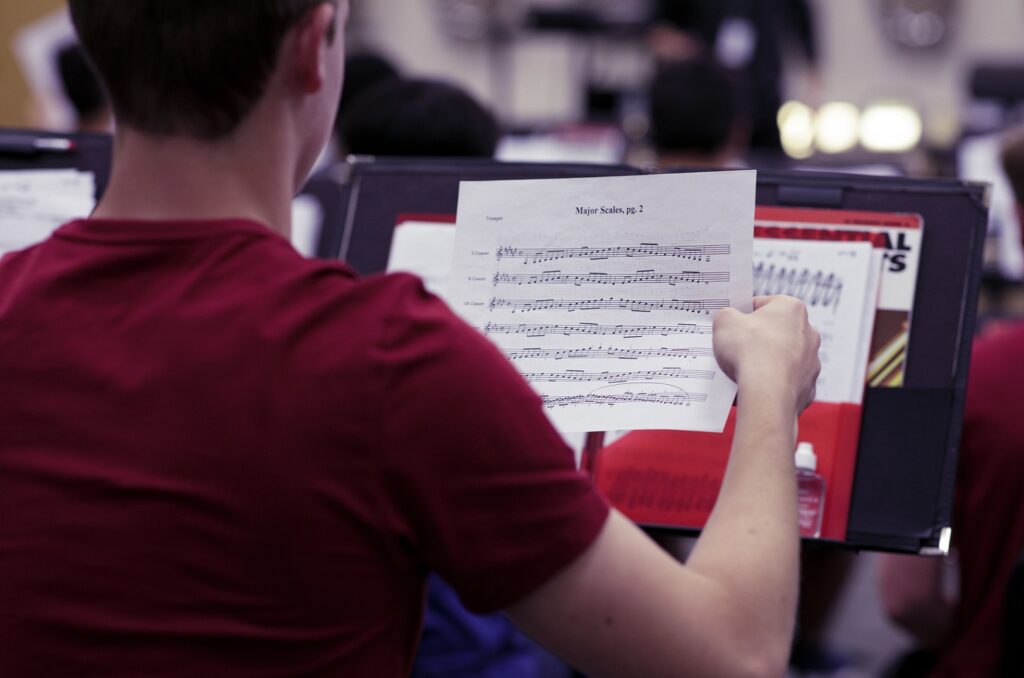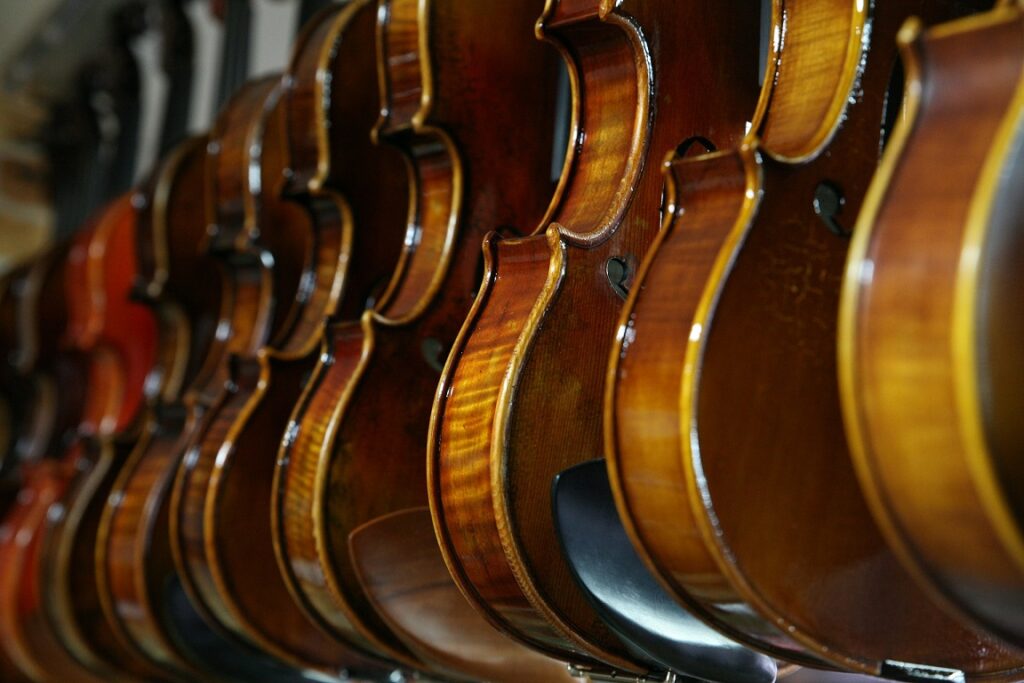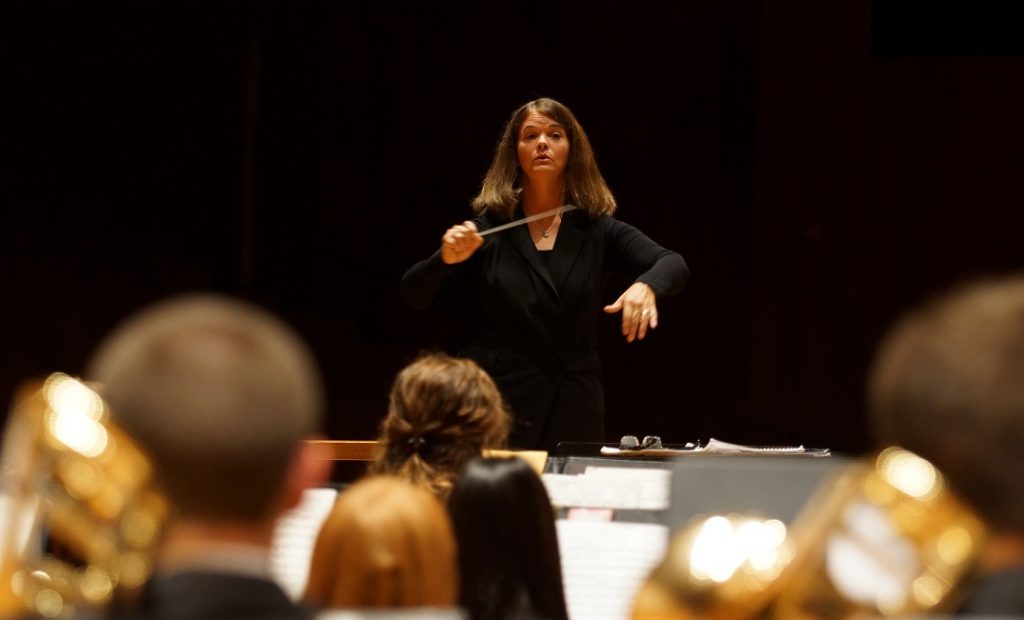Tagged Under:
Let Students Take Control During Rehearsals
Challenge your musicians to handle score study and rehearsals on their own — and even perform without you conducting them — in a unique and effective teaching model.
When my principal observes us, he wants to see an 80/20 split of the cognitive load where students do 80% of the lifting, and the teacher does 20%. This is the goal that I work toward, but I can’t help but wonder if I could get my students to do 100% of the work as I sit back and stress … I mean, watch. After much contemplation, I finally took the risk, and I encourage you to do the same!
During my sophomore year of undergrad at the University of New Hampshire, our professor, Andrew Boysen, Jr., handed us Momentum by Karl Blench and explained the assignment: Study the score and rehearse ourselves like a big chamber ensemble because he was not going to step in. This teaching model was developed and presented by Dr. Scott A. Jones of The Ohio State University. The original concept was created by the Orpheus Chamber Orchestra, a world-class orchestra known for performing some of the most prized and most challenging pieces in the orchestral repertoire, completely rehearsed and performed without a conductor.
This was a unique and fascinating experience for me. Our Wind Symphony was made up almost entirely of music majors, mostly upperclassmen who had already gone through conducting classes and several semesters of theory — of course, we were going to be good!
Now, as a music educator, I wanted to challenge myself to be successful using this same model for my high school students at Brunswick High School in Maine.
Choosing a Piece
Each piece has its own difficulties in a model like this, so you must consider your goal for the group. If you want students to play a piece on their own with little difficulty, consider something straightforward in both score study and performance like a march. (Disclaimer: I love marches. There is a lot to unpack in marches. As you will read, the score study portion of it, especially in terms of form, can be easy for students to grasp. No hate to marches!) Some difficulties they might encounter with a march is tempo and balance.
If your goal is for students to get deep into the musical material and background of a piece, and give an impassioned performance (don’t forget, I love marches! They can have impassioned performances too!), try a lyrical piece. Some difficulties students might have include score study (it’s a bit more involved) and performance issues like intonation and cohesion. Regardless, like any other programming choice you make, select a piece that will stretch your students and give them an appropriate challenge.

Score Study Process
One of the most important parts of rehearsal is the score study process. This informs musical decisions. Students of any age have the capacity to study a score, what varies is the depth of that score study that they are capable of.
To ensure that all students participated in the process, I split them into small groups. Each student received a copy of the score to study and rehearse with (make sure you get permission or use something in the public domain). Each group was responsible for one aspect of the music that they shared with the rest of the ensemble. I assigned the following topics and notes to my students, but you can choose the aspects of the score that you want your students to study.
- Background of the piece and composer
- Find the composer’s biography
- Find the program note for the piece
- Melody/Accompaniment
- Mark in your score who has the melody
- Mark in your score the roles of each instrument, which can be helpful to understand the piece
- Form
- What is the form of the piece?
- Identify recurring melodies and label them with clear labels (e.g. A or Theme 1)
- Emotional Arch
- What is the emotional arch of the piece?
- Where are the climactic moments of the work?
The Rehearsal Process
The process for our student-led rehearsal looks very different from what I experienced at UNH as an undergrad. Just like any other rehearsal, it’s important to have clear expectations and follow them. Giving your students rules for these rehearsals will help keep things on task and help to keep you from stepping in. You can add your own rules (and even change them as you go along), but here are some guidelines and expectations that worked for my students and me.

1. Timekeeper: Before the rehearsal begins, give students a specific duration of time to rehearse — typically, between 10 and 20 minutes works. Short timeframes can help students get to work, and you avoid times of awkwardness (trust me, there are plenty of those). Once you decide the duration of the rehearsal, assign a timekeeper. This is a popular job, and everyone will want to do it. Spread the responsibility. The timekeeper should give a heads-up to the group when there is one minute left in their rehearsal time.
2. Stand when you speak: Having students stand up when they speak is important to make sure students are not speaking over each other. It also makes it easier for students to be heard and to know who is speaking. It’s like the talking stick without the stick!
3. Discuss in your sections: To ensure that all students are participating, having small discussions within sections before giving comments to the whole group is helpful. Your younger students may be more intimidated to speak up in a large group, but they could have some good ideas that they feel more comfortable sharing with their section. It’s important for these small conversations with sections or neighbors to happen so all voices are shared. Sure, there will be a handful of students who are just getting dragged along for the ride, but keeping everyone engaged will ensure that it’s not just a few students doing the work for all.

4. Three comments, then play: I came up with this rule to make sure things keep moving along. Students can get bogged down in saying everything and nothing at the same time. Here’s a conversation I heard after a theater rehearsal. Students were reflecting on how things were going as a group.
Student 1: “We need to make sure that there is no talking in the wings because people can’t hear their cues to go on stage.”
Student 2: “People are missing cues to go on stage. Everyone needs to make sure they aren’t talking in the wings so people can hear their cues to enter the scene.”
Student 3: “The flow of the scene isn’t very good because people aren’t entering. I think they might be missing their cues because they can’t hear over people talking in the wings.”
All these students thought they said something different! I swear, it went on for a while. Keep it short and don’t repeat something that someone else said by saying it a little differently. Having the three-comment rule keeps students playing instead of talking.
5. Create a plan: Students should always use the last few moments of their rehearsal to decide what they will work on in the next rehearsal. This keeps them honest and saves them from wasting half their time by hemming and hawing about where to start today. Just like you make plans for your rehearsal, they should make plans for theirs! You might consider providing them a worksheet to help with this planning. Make sure you write it down to keep them honest!
6. Get them moving! One of the most inspiring performances I have seen was a wind band from Europe. On top of being incredibly proficient technically, their emotion and passion were palpable. One of the things that they did that made their connection so apparent was that they all moved together. The visual component made the musical so much more special. If you have ever played in a chamber ensemble, you know that movement is extremely important. It’s how you communicate. It’s equally as important here but needs to be 10 times more apparent in a larger ensemble. Urge your students to move!
7. Encourage kindness: I cannot emphasize this enough. Tensions will run high. That is just a fact. While students might want to react with snarky and sarcastic remarks, they must be reminded that while working with others kindness will go a long way. Kindness will improve collaboration and efficiency. There is a way to be honest and upfront while also being kind.

What Should You Do?
I’ll be honest — it’s very difficult to turn over the reins and sit idly by, but that’s what is required to make this work! It is important to your students’ development as musicians to do it on their own. It’s similar to watching a baby figure out which shapes fit into the appropriate holes on that classic toy. Just like that baby, your students will run into problems, make mistakes and struggle with doing score study and rehearsing on their own, but the moment you step in, they will see that you are not serious about the process and will always step in when they feel helpless. Resist the temptation to fix things!
I had a student say, “We need a conductor. We have done all we can do without a conductor.”
I told that student that I disagreed. They were just growing frustrated with the process.
As the saying goes, when the going gets tough, the tough get going. But in this case, the tough wanted to go away from the problem! It’s important for students to remain diligent. It’s your job to make them work through it.
Both you and your students will feel a sense of pride when everything begins to click. Some rehearsals will be painful to watch as they work out their problems, but other rehearsals will be inspiring as they do it all on their own and make great music! Students will make the right decisions because they have spent a lot of time learning from you what the right decisions are.
There are a few things that you can do to still be involved and not let your students feel like they are left hanging out to dry. First, during warm up work on skills that will help them in the collaborative rehearsal process. How will they start the piece? In a concert you can’t count “one. two. one, two, three, four.” Get students to make eye contact and start themselves at different tempos — and get them moving!
Second, I gave students notes at the beginning of each rehearsal about the previous rehearsals. These were not notes on the music — that is their job — they were comments about parts of the process. After all, music-making is not new to them, but doing it on their own is. I provided them guidance and reminders about the rules we learned at the beginning. One of my favorite things to tell students is to challenge themselves to do something outside of the box during their rehearsal. By getting them to problem solve in creative, unconventional ways, you might learn a new rehearsal technique.

The Concert
Yes, my students performed in a concert without a conductor! They thought I was joking when I told them they would. There were times when they felt helpless and wanted me to step in, but they persevered and did it! It was one of the most inspiring performances for the students and the audience. Students decided when they would perform their piece — they chose for it to be first, and it was a fantastic way to open their portion of the concert!
Admittedly, it was terrifying to sit in the audience and watch. What if things start to fall apart? When I’m up there with them, I can help, but I felt pretty helpless on the sidelines. But when everything goes right (and it did, phew!), it makes for a very proud director moment!
This process was very rewarding. Students learned a lot about themselves in this process, and they found out that they are capable of making music at a high level on their own. They have the tools and they know how to use them (even if they were holding the hammer upside down during the first rehearsal).
This model may sound daunting, but it will provide many benefits to you and your students. They will tap into the listening skills and musical decisions made during this process when you’re back on the podium. Give your students the chance to demonstrate their knowledge and skills. Take a step back during your rehearsal and let them do 100% of the cognitive lifting.















